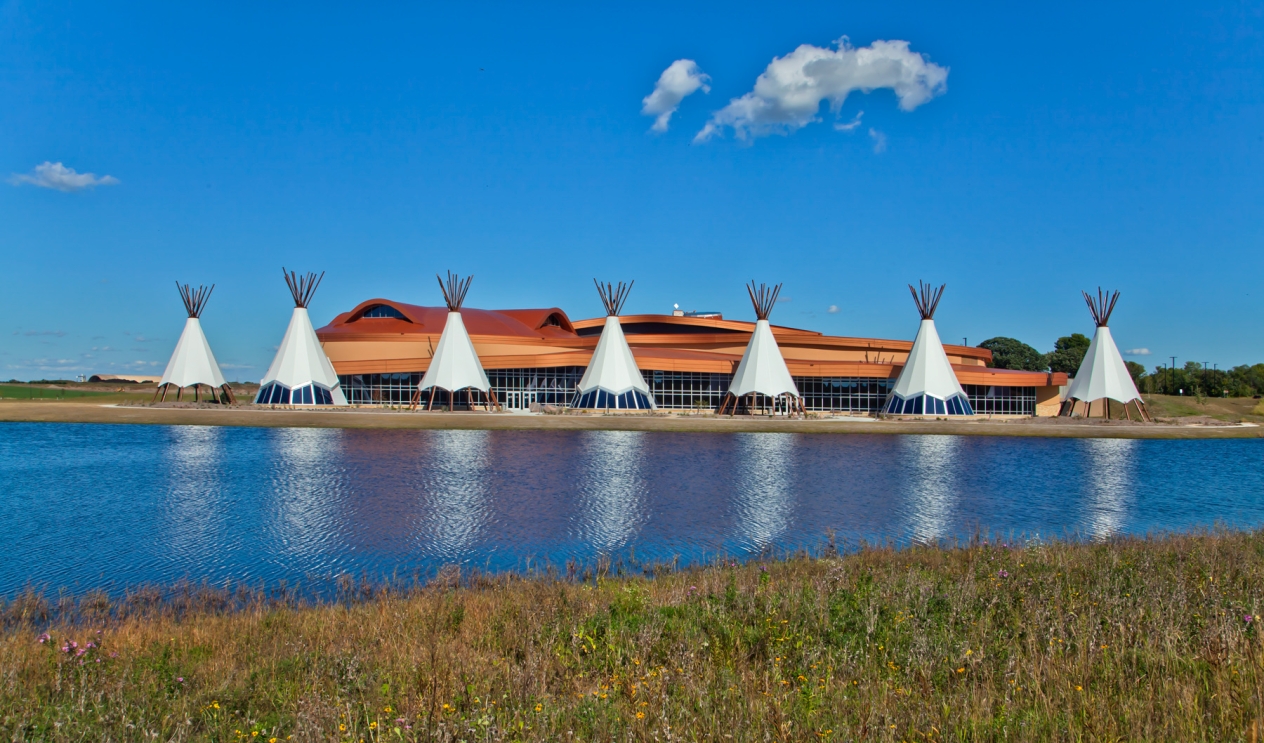The time that Andy Vig spends along the Minnesota River near Hoċokata Ṫi, cultural center of the Shakopee Mdewakanton Sioux Community, serves as a reminder of where his water comes from and a connection to previous generations.
“If you look at our Dakota village sites along the Minnesota River, most of those village sites were chosen based on the availability of fresh drinking water through freshwater springs,” said Vig, the director of Hoċokata Ṫi.
Dakota people have relied on these waters for hundreds if not thousands of years. These waters have provided drinking water and food including fish, beaver, waterfowl, and psiŋ (wild rice).

Vig explained how Dakota culture and worldview recognizes and respects the power of mni (water) as one of the elements used by all living things for survival. “Mni wiċoni, water is life. Mni wak̇aŋ, water is sacred.”
Even something as routine as harvesting psiŋ now that it has returned to southern Minnesota is now a meaningful experience to Vig, knowing its importance to his ancestors.
It’s also important to recognize the long history of native tribes having land and resources taken from them, Vig said. He hopes communities and individuals can be proactive in working to protect water and to share resources fairly. “We don’t own the water; it’s something that was given to us.”
Learn more in the We Are Water MN exhibit
Vig shared his story as part of We Are Water MN, a traveling exhibit and community engagement program that explores Minnesotans’ relationships with water. The exhibit’s next host is the Shakopee Mdewakanton Sioux Community. It will be on view at Hoċokata Ṫi, a cultural center that interprets and encourages traditional Mdewakanton Dakota cultural heritage, language, and history.
As shared by the Shakopee Mdewakanton Sioux Community, “The SMSC’s lands are perched above the Minnesota River and at the top of local watersheds, including the Prior Lake Outlet Minor Watershed, Lower Sand Creek Minor Watershed and City of Shakopee Minor Watershed. Protecting and improving SMSC waters has a direct effect on the quality of water flowing downstream to their neighbors.

“For 25 years, the SMSC has monitored the health and water quality of its lakes, streams, wetlands, and springs. The SMSC’s Water Resources team collects data on common water pollutants including chloride, phosphorus, and nitrogen. The team also monitors biological indicators for aquatic health and measures properties like dissolved oxygen, conductivity, and the flow of water entering and leaving SMSC lands. All of this work is done to help keep area waters clean and provide a safe and healthy resource—for both Tribal members and the surrounding communities—for generations to come.”
Visit the exhibit to hear local stories and learn more about water and its importance to the Shakopee Mdewakanton Sioux Community from Oct. 10 through Dec. 7. The exhibit will be viewable during Hoċokata Ṫi’s normal business hours, from 9 a.m. to 4:30 p.m. Wednesday through Saturday. The We Are Water MN exhibit is free.
Visitors can also elect to explore Hoċokata Ṫi’s permanent public exhibit, Mdewakanton: Dwellers of the Spirit Lake, to enhance their knowledge and understanding of the Mdewakanton Dakota people and their history. Find more information on ticket pricing on Hoċokata Ṫi’s website.
About We Are Water MN
We are Water MN is led by the Minnesota Humanities Center in partnership with the Minnesota Pollution Control Agency; the Minnesota Historical Society; the Board of Water and Soil Resources; the Minnesota Departments of Agriculture, Health, and Natural Resources; and University of Minnesota Extension.
The program is funded in part with money from the Clean Water, Land & Legacy Fund — which was created with the vote of the people of Minnesota on Nov. 4, 2008 — and by the National Endowment for the Humanities.
